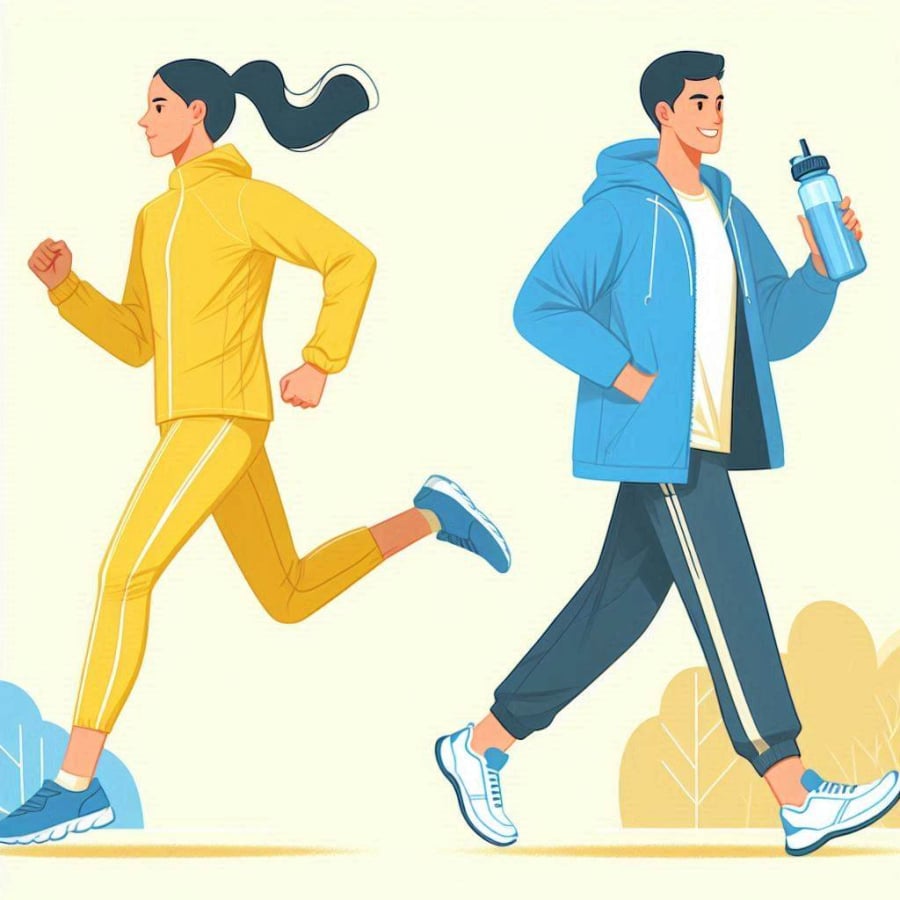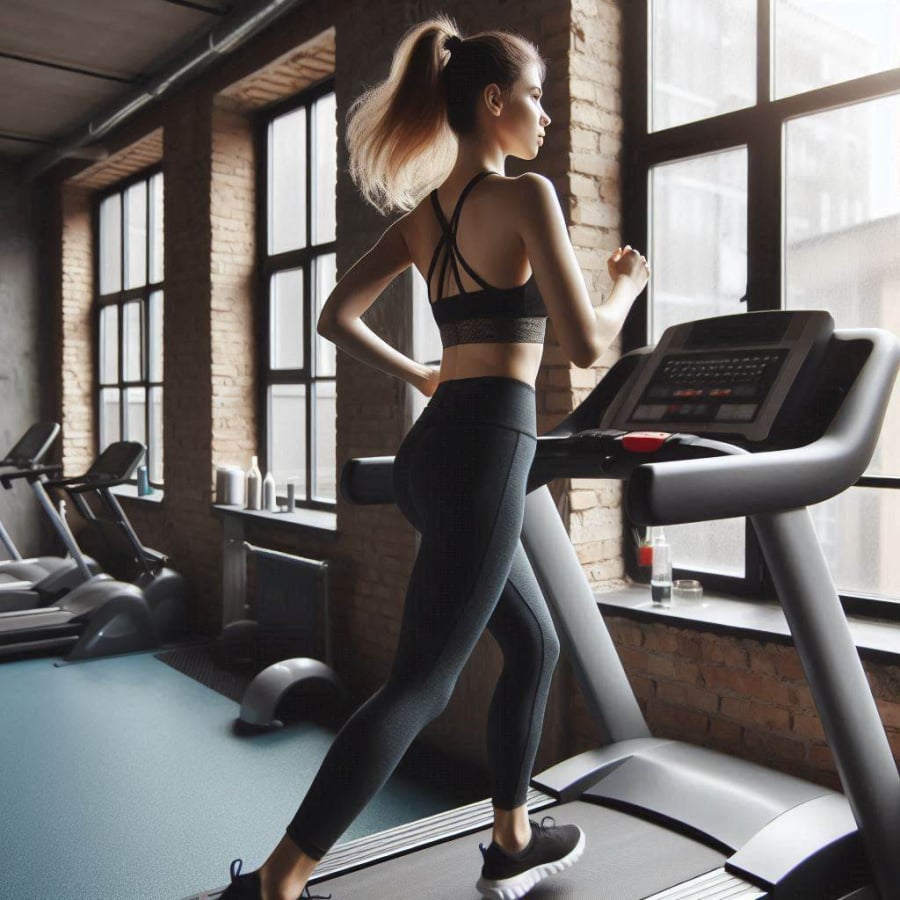Walking and running are two highly effective forms of cardiovascular exercise, often referred to as cardio. Research has shown that both types of workouts can support weight loss, maintain body weight, increase endurance, and boost the immune system. Additionally, they contribute to improved cardiovascular health and can even prolong life. Regularly engaging in walking and running activities also helps prevent certain mental health-related issues such as depression and anxiety disorders, while enhancing one’s mental well-being and overall happiness.
A common question arises regarding the efficacy of a busy individual’s 10-minute home run versus an hour-long outdoor walk. Is there a significant difference in the health benefits of these two activities?

Comparing the Benefits of a 10-Minute Run vs. a 1-Hour Walk for Busy Individuals
10-Minute Daily Run
A study published in the American College of Cardiology journal revealed that running, even at a slow pace for just 5-10 minutes a day, can significantly reduce health risks and contribute to longevity. Furthermore, research from the Harvard T.H. Chan School of Public Health indicates that a mere 10-15 minutes of daily running can lower the risk of various health issues, including a 26% reduction in the likelihood of depression.
According to the Times of India, running in place is a high-intensity form of exercise that can positively impact one’s health and physical well-being, especially when compared to walking, which is considered a moderate-intensity activity. This higher intensity can lead to increased calorie burn and improved metabolic health. For those aiming to lose weight or enhance their cardiovascular fitness, the elevated calorie burn associated with running in place can be particularly advantageous.
Therefore, busy individuals, especially those confined to office environments, can opt for a 10-minute running-in-place routine to save time without compromising their health goals.
Master Sergeant Nguyen Thuy Song Ha, from the Department of Sports Medicine and Endoscopy at the Orthopedic Trauma Center, emphasizes that any form of running is beneficial for health, aiding in calorie burning, weight control, reducing the risk of chronic diseases, and prolonging life. However, individuals should consider their personal circumstances and goals when choosing between running on a treadmill or outdoors to optimize their well-being.
According to Sergeant Ha, having a treadmill at home allows for flexibility in your workout schedule, regardless of the weather or social distancing requirements. Treadmills offer the convenience of adjusting various parameters, such as speed, incline, time, and calorie burn. Additionally, treadmill running is generally safer due to the reduced risk of falling or sustaining injuries from obstacles or uneven surfaces.
However, if improving your mood and joint health are priorities, outdoor running may be the preferred option.
Sergeant Ha also stresses the importance of a thorough warm-up before running, as it is a high-intensity activity. Ensure you choose comfortable running shoes (opt for a slightly larger size for added comfort) and breathable clothing. Stay properly hydrated before, during, and after your workout. Towards the end of your run, gradually decrease your speed and transition into walking to let your heart rate come down and your muscles cool down, facilitating a smoother return to a resting state.

Prioritize Comfort and Safety: Choose the Right Shoes and Breathable Clothing
1-Hour Daily Walk: Significant Cardiovascular Benefits
According to First Lieutenant Doctor Nguyen Huy Hoang from the Vietnam-Russia High-Pressure Oxygen Center, Ministry of Defense, walking is not just a recreational activity but also an effective way to enhance overall health. In addition to strengthening the cardiovascular and respiratory systems, walking reduces the risk of heart disease, helps control blood pressure, alleviates joint pain, strengthens bones, and aids in reducing body fat. It also plays a role in preventing certain types of cancers.
A report from Harvard Health reveals that a daily walking routine of 30 minutes to 1 hour can lower the risk of heart disease by up to 30%. Research has shown that walking reduces the occurrence of heart disease risk factors, such as high blood pressure, high cholesterol, and elevated blood sugar levels.
Additionally, walking helps burn fat and improves the body’s ability to utilize glucose. Sustained, high-intensity movement over an extended period can stabilize heart rate, lower blood pressure, and increase vascular wall flexibility.
When you commit to a 1-hour daily walk, your muscles remain active throughout, not only burning calories during the activity but also creating a sustained after-burn effect as your muscles require energy to recover and repair. This enhanced calorie burn effectively supports weight loss goals.
Walking for an hour each day also improves muscle flexibility and boosts the endurance of the respiratory and circulatory systems. These benefits not only promote overall health but also enhance performance in weight control endeavors.
The number of calories burned while walking depends on various factors, including body weight, walking speed, and level of exertion. For an average adult, the calorie burn can range from 300 to 400 calories per hour of walking.
When combined with a sensible diet, a daily 1-hour walk can become a pivotal component of a weight loss and healthy living strategy.
Lieutenant Hoang also advises walkers to opt for comfortable clothing and stay properly hydrated before and after their walks. A few minutes of light stretching before starting and gradually increasing the pace are recommended. When navigating challenging terrain, be mindful of potential hazards like cliffs or strong waves when walking near the ocean. If safety is a concern, consider finding a walking partner or joining a walking group.
To maximize the health benefits, aim for 8,200 to 10,000 steps per day. Cultivating a consistent walking habit will contribute to maintaining better health over the long term.
The Ultimate Beauty Elixir: A Sour Solution for Glowing Skin and Luscious Locks
Apple cider vinegar is not just a kitchen staple but also a natural beauty secret for many women. With its myriad of benefits, from skincare to hair care and weight loss, apple cider vinegar has conquered the hearts of Korean and Western celebrities alike. Discover the secrets to using apple cider vinegar correctly for glowing skin, shiny hair, and a slender figure!



































